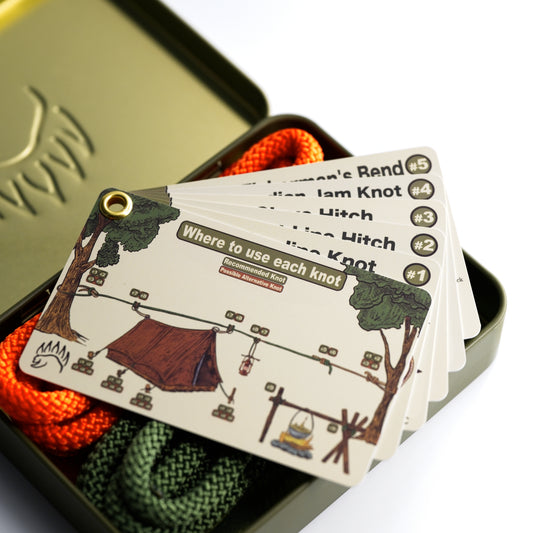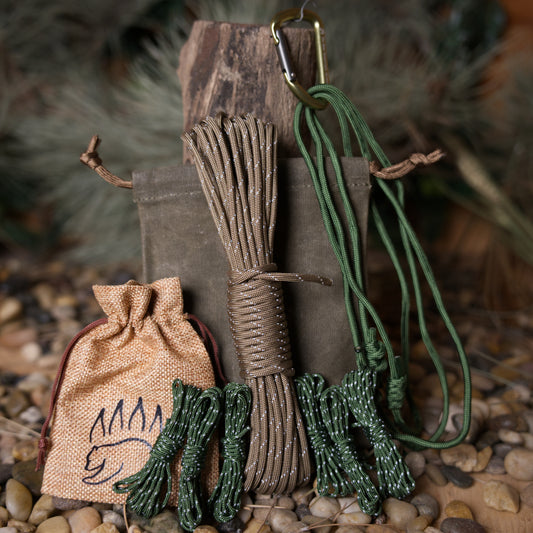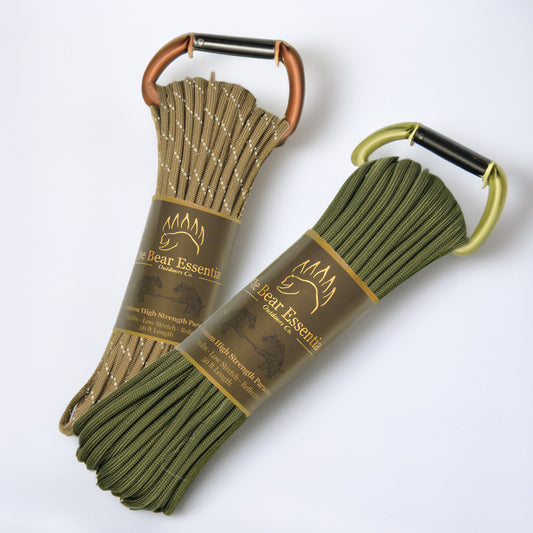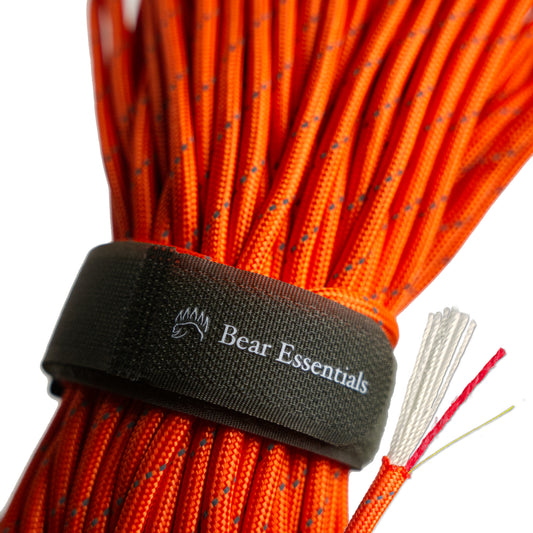How to Tie the Fisherman’s Knot
Usage
The Fisherman’s Knot is commonly used to join two fishing lines, making it a go-to for anglers needing a reliable connection.
Why Learn the Fisherman’s Knot?
Its overhand-based structure ensures a quick, dependable join. This knot is ideal for anglers and anyone needing a simple rope connection. It’s easy to tie, holds well for light to medium fishing lines, and creates a small knot that passes through rod guides. It’s also versatile for ropes in utility tasks beyond fishing.
Common Uses
-
Fishing:
- Joins two fishing lines for extended length.
- Connects similar-diameter lines for tackle setups.
-
Utility:
- Ties ropes for bundling objects.
- Secures lightweight loads in household tasks.
ABOK Number
(Ashley Book of Knots)
Other Names
Category
|
Notable Features
- Easy to Tie: Requires minimal steps, perfect for field conditions.
- Strong for Fishing: Holds well for light to medium fishing lines.
- Compact Profile: Creates a small knot that passes through rod guides.
- Versatile: Works for ropes in utility tasks beyond fishing.
Variations
(No true variations listed in the provided data. To add security, tie an additional overhand knot on each side after the initial knots to increase grip, though this may make untying harder.)
Similar Knots
Double Fisherman’s Bend vs. Fisherman’s Knot
- Pros: Offers greater security and strength for joining ropes or lines.
- Cons: More complex to tie and harder to untie after heavy strain.
Double Uni Knot (Bend) vs. Fisherman’s Knot
- Pros: More adaptable for lines of different diameters and easier to adjust.
- Cons: Takes longer to tie due to multiple wraps on each side.
Blood Knot vs. Fisherman’s Knot
- Pros: Sleeker profile, ideal for thin fishing lines and fly fishing.
- Cons: Trickier to tie, especially with mismatched line sizes.
History
The Fisherman’s Knot likely originated in maritime and fishing communities, where quick, reliable line joins were essential for nets and tackle. Referenced in The Ashley Book of Knots (#1414), it’s valued for its simplicity in angling and utility tasks. Its use has spread to modern fishing, particularly for monofilament lines, and to general rope work for lightweight bundling.
Security Level
The Fisherman’s Knot provides reliable security for joining fishing lines or ropes under light to moderate loads. It holds well for similar-diameter lines but may slip with slick or mismatched materials. Adding extra overhand knots can enhance grip for critical applications.
Downsides
- Jamming risk: Hard to untie after heavy strain, especially with fishing lines.
- Line compatibility: Less secure for lines of different diameters or materials.
Structure
- Lay the two ropes parallel, with ends overlapping.
- Take the working end of the first rope and tie an overhand knot around the second rope’s standing part.
- Repeat with the second rope, tying an overhand knot around the first rope’s standing part.
- Pull both standing ends to slide the overhand knots together until snug.
- Trim excess tag ends for a clean finish.
Pro Tip: Wet the knot before tightening to reduce friction and improve strength. Ensure both overhand knots are tied in the same direction for symmetry. Check knot tightness to avoid slippage under load.
FAQ
Is the Fisherman’s Knot strong enough for big fish?
It’s reliable for light to medium fish but may slip under extreme loads; consider the Double Fisherman’s Bend for heavier catches.
How does the Fisherman’s Knot compare to the Double Uni Knot?
It’s quicker to tie but less versatile for mismatched lines, unlike the Double Uni’s adjustable wraps.
Can the Fisherman’s Knot be used for braided lines?
It works but is less secure than knots like the FG Knot, designed for braid-to-mono connections.
Why does the Fisherman’s Knot jam after use?
The overhand knots tighten under load, binding the lines; wetting before tightening can help ease untying.
Is the Fisherman’s Knot good for utility tasks?
Yes, it’s effective for bundling ropes or securing light loads, though it’s less common than in fishing.
Important Notes on Safety
Common failure points include slippage with slick or mismatched lines and jamming after heavy loads. Always test the knot under light tension before relying on it. Verify line diameters are similar for optimal hold. Inspect the knot for proper alignment before loading. Practice tying in low-stakes settings to ensure accuracy.









